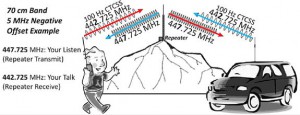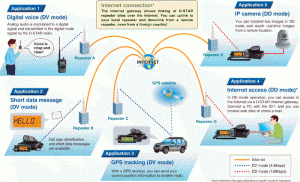The Jefferson Amateur Radio Club operates and maintains Analog VHF/UHF FM and Digital D-STAR repeaters.
Analog VHF/UHF FM Repeaters

Amateur radio repeaters increase two-way radio communication distances by acting as a “go between” between two radio operators. If you want to cover your 100,000 acre farm, your city or even your entire state you’re going to need a repeater system. The most common Amateur radio repeater systems operate in the VHF and UHF portions of the radio spectrum and use CTCSS tone (PL) for access.
Digital VHF/UHF D-STAR Repeaters
D-STAR stands for Digital Smart Technologies for Amateur Radio. It is an open standard digital communication protocol established by the Japan Amateur Radio League.
D-Star is capable of connecting repeater sites using the Internet and forms a world-wide radio network. This state-of-the-art system has a tremendous amount of functionality not available with less sophisticated linking system like IRLP and Echolink.

To access the D-STAR network requires a D-STAR capable radio or a DV Dongle attached to a PC. You must also register your callsign with a D-STAR Gateway repeater.
For instructions on how to register your callsign to use the D-STAR repeaters operated by the JARC, click here.
